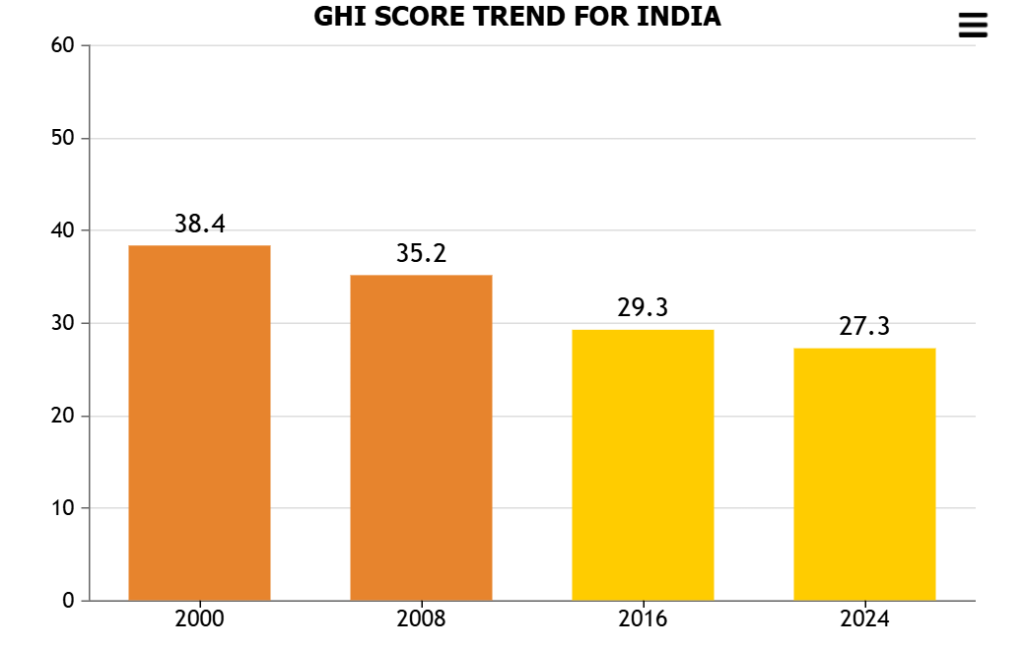Why Quality Content Writing Is the Key to Business Success in 2025

Businesses are constantly trying to find new ways to capture their audience’s attention and build lasting connections. However, with so much content being created and shared online daily, cutting through the noise has become increasingly challenging. Many businesses struggle to see the results they desire from their content efforts, often due to one major oversight: quality. Poor or mediocre content fails to engage, inform, or build trust, leading to missed opportunities and diminished brand presence. According to a recent report by Demand Metric, content marketing costs 62% less than traditional marketing and generates about three times as many leads. Yet, this statistic holds true only when the content produced is high quality and tailored to meet the needs and expectations of the audience. Businesses that prioritize quality content stand to gain significant advantages, including improved search rankings, greater customer trust, and higher conversion rates. Content writing in 2025 won’t be just about pushing out as much material as possible; it will be about making every piece count. As audiences grow more discerning and search engines become smarter, businesses need to adapt by producing content that is relevant, engaging, and impactful. Quality content goes beyond keywords and SEO optimization—it’s about creating an experience for the reader that resonates, educates, and builds a connection. The Evolution of Content Writing and Its Business Impact The content landscape has dramatically changed. Initially, businesses approached content as a numbers game, prioritizing quantity over quality in an attempt to dominate search engine rankings. However, this strategy soon led to an internet filled with low-value, redundant content. In recent years, search algorithms have evolved to reward content that prioritizes user experience. Google’s updates, especially those focusing on E-E-A-T (Experience, Expertise, Authoritativeness, and Trustworthiness), have shifted the focus towards well-researched, original content that provides real value to readers. According to HubSpot’s 2024 State of Marketing Report, businesses that prioritize quality content see 2.3 times more traffic and significantly higher user engagement than those that don’t. What Defines Quality Content in 2025? User-First Approach Quality content in 2025 puts the reader at the forefront. It’s no longer enough to write for search engines. Businesses need to deeply understand their audience, including their challenges, needs, and interests. This user-centric approach ensures content is not only found but read, shared, and appreciated. SEO + Engagement SEO remains a critical component of content success, but it needs to be intertwined with readability and engagement. According to Moz, content that is both optimized for search engines and compelling for readers has a 53% higher chance of ranking on the first page. This balance ensures that while a piece is discoverable, it also captivates the audience and holds their attention. Authentic Voice Today’s consumers are quick to spot inauthenticity. Brands that adopt a genuine, relatable tone see more engagement. Quality content that showcases an authentic voice builds trust and helps brands forge stronger connections. According to Edelman’s 2023 Trust Barometer, 81% of consumers said they need to trust a brand to buy from it, emphasizing the importance of trustworthiness in content. AI and Human Creativity: A Partnership, Not a Replacement AI has become a valuable asset in the content creation toolkit, offering insights, data, and assistance in automating routine tasks. However, it’s important to remember that AI cannot replicate human creativity, emotion, or unique perspectives. AI’s Role AI-driven tools streamline content strategies by generating ideas, performing keyword research, and suggesting improvements. A study by McKinsey found that businesses leveraging AI for content strategy saw a 30% boost in productivity. AI aids in data-driven decisions but should not replace the creative processes essential for meaningful writing. Human Expertise Despite AI’s advancements, human writers bring empathy, intuition, and experience that technology cannot. The nuances of storytelling, the art of crafting a compelling narrative, and the personal touch are irreplaceable elements that resonate with readers and build loyalty. Balance Combining AI and human input allows businesses to achieve efficiency without sacrificing quality. This balanced approach leads to content that is both optimized for search engines and relatable for audiences. Benefits of Prioritizing Quality Content Enhanced Search Rankings Search engines are now sophisticated enough to assess content quality. High-quality writing not only satisfies search algorithms but also improves user experience, leading to lower bounce rates and longer time spent on pages. SEMrush’s 2024 report noted that sites with comprehensive, valuable content are 35% more likely to maintain top search positions. Stronger Brand Loyalty Trust is earned through consistent, reliable, and insightful content. Readers who find valuable information are more likely to return and develop loyalty towards a brand. Quality content demonstrates a brand’s expertise, fostering trust and establishing it as a thought leader in its field. Conversion Power Engaging content guides readers through their journey and makes it easier for them to act. Whether it’s subscribing to a newsletter, filling out a contact form, or making a purchase, quality content can significantly impact conversion rates. According to Content Marketing Institute, businesses that prioritize quality content see a 6x higher conversion rate than those that don’t. Proven Strategies for Producing Quality Content Hire Experienced Writers Skilled writers understand how to blend industry knowledge with compelling storytelling. Hiring professionals who can produce quality content ensures that your brand voice is consistent, relatable, and authoritative. Leverage Editing Tools Editing tools like Grammarly and Hemingway App help polish content for grammar and readability, enhancing its clarity and flow. However, they should be seen as complementary aids rather than primary content creators. Understand Your Audience Building detailed audience personas can guide the content creation process, ensuring that topics, tone, and delivery align with reader expectations. Personalized, audience-focused content is more likely to resonate and perform well. Future-Proofing Your Content Keep it Evergreen Evergreen content remains relevant and valuable over time, making it a strategic investment. Guides, expert interviews, and foundational pieces continue to drive traffic and engagement long after their publication. Adapt to Trends The digital landscape is fluid. Staying ahead of industry trends and adapting content to reflect new data, technologies,
A Practical Guide to Timeboxing for Content Structuring

Timeboxing for content structuring is an effective method to manage content planning while catering to audience attention span and improving reading duration. This strategy involves setting fixed time periods for different phases of content creation to optimize both productivity and content quality. The Concept of Timeboxing Timeboxing is a time management approach where tasks are allotted specific time slots. Applying this to content structuring allows content creators to break down the content creation process into manageable blocks, enhancing both focus and efficiency. Whether you are a solo writer or part of a team, this method streamlines workflow and reduces procrastination. Why Timeboxing Matters in Content Planning Efficient content planning is vital for maximizing engagement and aligning with your audience’s content consumption duration. By using a timeboxing strategy, each phase—research, writing, editing—has a designated timeline, which ensures that each part is given the right amount of attention. The result is a well-rounded piece that aligns with what your readers want and need. Addressing the Challenge of Audience Attention Span Decreased Attention Spans Modern readers have limited attention spans, expecting concise, impactful content that delivers value quickly. Timeboxing helps cater to this by breaking down information into smaller, manageable parts that sustain interest. Structured Flow A well-structured content flow is crucial for maintaining reader engagement throughout the piece. Timeboxing divides content creation into segments that ensure pacing aligns with the natural attention span of readers. Reader’s Journey Focus Effective content anticipates the reader’s journey and places emphasis strategically. Timeboxing enables creators to pinpoint and emphasize key content at moments when attention might wane, ensuring ongoing interest. Trimming Fluff Clutter-free content is essential for maintaining the reader’s focus and delivering clear information. Timeboxing promotes a habit of eliminating unnecessary details, resulting in concise, high-impact sections. High-Quality Content Each part of the content should contribute meaningfully to keep readers engaged. With timeboxing, each section is crafted to deliver value without overwhelming the audience, promoting continuous reader engagement. Setting Expectations for Audiences with Timeboxing for Content Structuring Transparency in Commitment: Timeboxing content helps set clear expectations for audiences, signaling how much time they need to invest. Audiences are more likely to engage when they understand the commitment involved and decide it’s worthwhile. Audience-Centric Benefits: While content producers benefit from structured time management, audiences also gain from a well-timeboxed approach. This framework respects the most limited commodity they have—time—by aligning content with clear, pre-defined consumption periods. Measuring Consumption Time: The duration of content can be measured using a “listening duration” standard. Content read aloud takes longer to consume than when read silently, with average reading speeds being 250 words per minute versus 150 words per minute for listening. Reading vs. Listening: Unlike reading, listening can’t be sped up or easily revisited. Timeboxing encourages content creators to present information in a way that is straightforward and easy to process, ensuring that audiences stay engaged without feeling rushed or frustrated. Importance of Duration: The length of content impacts: Commitment: Audiences gauge whether they can allocate the required time. Attention: Longer durations may test attention spans. Interest: Well-paced content aligns with what the audience finds valuable. Commitment Indicators: Features like “time to read” indicators help audiences make informed decisions. Knowing whether content suits their available time can help them choose when to engage, ensuring content meets their expectations for detail and depth. Diverse Content Needs: Content varies in length and complexity; a standardized approach to content duration helps align specific content types with appropriate consumption periods. This not only improves user experience but also enhances the effectiveness of the content in meeting the audience’s needs. Standardizing content length through timeboxing enriches both the production process and audience experience, creating clear, respectful interactions where time is valued and content is consumed more effectively. Implementing Timeboxing for Effective Content Structuring Set Goals and Prioritize: Begin by outlining the main objectives for the content. Whether the piece aims to inform, entertain, or persuade, setting clear goals helps allocate time efficiently. Break Down the Content Phases: Research: This phase often dictates the quality of your content. Allocate time for gathering data, analyzing trends, and structuring the flow. Drafting: Timebox this phase to focus solely on translating your research into coherent content. This step improves initial readability and allows writers to produce drafts without overthinking. Editing and Proofreading: Allocate the final time slot for fine-tuning. This step refines the content, enhancing its clarity and ensuring it aligns with the planned structure. Track and Adjust: Monitor how well the timeboxing strategy works. Adjust time blocks if certain phases consistently need more or less time. Practical Example of Timeboxing Strategy Suppose a writer is working on a 1,000-word article. The timeboxing plan could be as follows: Research and Planning (1 hour): Dive into high-value keywords like “audience attention span” and “content consumption duration.” Draft Writing (2 hours): Focus on laying down the primary ideas and integrating secondary keywords naturally. Editing (1 hour): Revise to enhance flow, check for keyword density, and ensure alignment with content structuring goals. Timeboxing Benefits Beyond Content Creation Implementing timeboxing extends its value to all aspects of work and life, making it a versatile and impactful strategy. Enhanced Time Management: Timeboxing builds habits that improve productivity beyond content structuring. Creators become more adept at allocating time efficiently for all tasks. This leads to better overall scheduling and prioritization in various professional and personal activities. Reduced Procrastination: Setting fixed time periods for activities helps combat procrastination by instilling a sense of urgency. Tasks are approached with clearer goals and focused efforts, limiting delays and hesitation. Improved Work Quality: By dedicating focused time blocks to specific tasks, the quality of work across various projects improves. Concentrated periods of work encourage deeper thinking and more thorough outputs. Increased Accountability: Timeboxing promotes self-accountability, as there is a clear timeline for completing tasks. This structured approach fosters a sense of responsibility and progress tracking, encouraging creators to meet set goals. Stress Reduction: Knowing that each task has a designated time reduces feelings of being overwhelmed. It
Life Lessons from Ratan Tata in I Came Upon a Lighthouse

Book Name: I Came Upon A LighthouseAuthor: Shantanu NaiduIllustrator: Sanjana DesaiGenre: MemoirFormat: HardbackBook Length: 232 pagesPrice: ₹364/-Publishing House: Harper Collins IndiaPublication Date: 11th January, 2021ISBN: 9390327520 My Rating : 5/5 In I Came Upon a Lighthouse, Shantanu Naidu opens the door to a unique mentorship journey with the legendary Ratan Tata—a relationship that began in the most unexpected way and soon blossomed into a profound friendship. What starts as a compassionate project for stray dogs turns into a story of life lessons, genuine guidance, and wisdom from one of India’s most admired figures. With a foreword by Tata himself, the book sets a warm, reflective tone that invites readers to explore lessons in humility, purpose, and resilience. The visual storytelling is further enriched by Sanjana Desai’s illustrations, which add an evocative, artistic layer to Shantanu’s deeply personal account. Her artwork brings Naidu’s narrative to life, capturing the nuances of his relationship with Tata and adding visual appeal to his words. This collaboration of storytelling and art allows readers to immerse themselves not only in Naidu’s story but in a beautifully illustrated journey that adds depth to each lesson shared. This isn’t just a story about industry or career growth; it’s a heartfelt narrative of guidance, empathy, and purpose. This is more than a book about business; it’s a journey into values that transcend generations, reminding readers of the beauty in simplicity, empathy, and leaving a meaningful legacy. Through Naidu’s writing, readers are taken into the world of Tata, not as an industry magnate, but as a person with depth, empathy, and purpose. The lessons Shantanu learned from Ratan Tata resonate on a profoundly human level, showing readers what it means to lead a life defined by compassion, resilience, and simplicity. In a narrative filled with admiration and insight, Shantanu shares ten powerful lessons from Tata’s life—lessons that can inspire readers to become better versions of themselves. 10 Life Lessons from Ratan Tata for You and Me Here’s a closer look at the wisdom Shantanu gathered, which serves as a guide for anyone who wishes to lead with purpose, humility, and heart. Humility is Strength– One of the most striking elements of Tata’s character is his humility. Despite his success and status, Tata remains approachable and down-to-earth. Shantanu found that humility isn’t a weakness—it’s a quiet, unshakable strength that allows leaders to connect genuinely with people. In a world often defined by ego and power, this lesson serves as a reminder that true respect comes from humility. Relationships Over Transactions– In a world that increasingly values speed and efficiency, Tata stands out for his commitment to meaningful relationships. He doesn’t view interactions as mere transactions but as opportunities to understand and connect with others. Shantanu observed how this approach creates lasting bonds built on respect and trust. For readers, this lesson is a call to value relationships and recognize that the greatest success lies in making real connections. Embrace Simplicity– Ratan Tata’s life is a lesson in simplicity. Far from the glitz and glamour one might expect, he embraces a simple lifestyle, finding joy in everyday things. Through Tata, Shantanu learned—and shares with readers—that happiness isn’t tied to luxury but to a contentment rooted in the present. It’s a nudge for readers to reflect on the unnecessary complexities we add to our lives. Innovate Constantly– Throughout his career, Tata has championed innovation, encouraging risk-taking for the greater good. From Shantanu’s perspective, Tata’s drive to create and build for society, rather than just profit, is deeply inspiring. It reminds readers that innovation is a mindset—a continuous pursuit of betterment that can redefine industries, societies, and lives. Focus on Giving Back– Philanthropy and giving back are central to Ratan Tata’s philosophy. He firmly believes that success should empower and uplift those around you. Shantanu learned that life isn’t just about personal achievement; it’s about using that success to positively impact others. This lesson speaks directly to readers: it challenges us to think about how we can give back, regardless of where we are on our journeys. Handle Criticism with Grace– Tata’s calm demeanor in the face of criticism taught Shantanu—and by extension, readers—a valuable lesson in resilience and self-assurance. Instead of reacting defensively, he listens, learns, and moves forward with grace. In a society often quick to retaliate, this lesson stands as a refreshing reminder of the strength in calmly embracing feedback, even when it’s hard to hear. Lead with Empathy– In his dealings with people, Tata leads with empathy, valuing every individual’s perspective. For Shantanu, this was a revelation, showing that leadership isn’t just about making decisions but about understanding and caring for those affected by those decisions. Readers are encouraged to adopt empathy as a guiding principle in both their personal and professional lives, creating environments where people feel valued and understood. Stay True to Your Ethics– Tata’s dedication to ethics in business was a defining aspect of his mentorship. Shantanu witnessed how Ratan Tata consistently prioritized integrity, even when it wasn’t the easiest or most profitable path. This unwavering commitment to ethics serves as a potent lesson for readers: in a world often dominated by shortcuts, true success and respect come from staying true to one’s values. Cultivate Resilience in Tough Times– Ratan Tata’s resilience in the face of adversity inspired Shantanu to persevere through his own challenges. Tata’s attitude toward setbacks is a lesson in embracing challenges as opportunities for growth. For readers, this resilience is a call to stay strong during hard times, knowing that they are temporary and that every setback offers an opportunity for growth. 10. Legacy is About People, Not Wealth– Perhaps the most profound lesson Shantanu learned is that true legacy isn’t defined by wealth or status but by the positive impact one leaves on others. Tata’s legacy is built on how he’s touched people’s lives, both personally and professionally. For readers, this lesson is a reminder to think about the mark they want to leave—not through material wealth but through meaningful contributions
7 Healthy Habits for Writers to Find Success

Writing isn’t just about stringing words together; it’s a way of life. Some days the words come easily, and other days even opening the laptop feels like a victory. We’ve all been there—juggling ideas, projects, deadlines, and the constant tug of inspiration that seems to show up whenever it pleases. But the truth is, success as a writer doesn’t just happen. It’s built slowly through small, intentional habits. Whether you’re just starting out or have years of experience, developing healthy routines will make your writing journey more rewarding and productive. Here are seven habits that have made all the difference for me—and they might do the same for you. Write Every Day The simplest advice is often the hardest to follow—write every day. Even if it’s just for a few minutes, commit to putting words on the page regularly. Not every day will feel inspired, but consistency builds momentum. One thing that helps me is preparing beforehand. I organize my ideas, so I don’t waste time deciding what to write when I sit down. If I’m short on time, switching off distractions like the TV or phone makes all the difference. Action Tip: Keep multiple projects going. When one stalls, move to another. It keeps the words flowing and helps avoid writer’s block. Cultivate a Routine Routine is the foundation of productivity. Experiment with different times of day to find when you write best—whether it’s morning, evening, or somewhere in between. Structure matters, especially when working from home, so plan regular breaks for meals and movement. Building a habit takes time, but once it’s in place, writing becomes a natural part of the day rather than a task. Action Tip: Test out different routines for a week at a time. Track when you feel most productive and stick to that schedule. Read Broadly and Consistently Reading is essential for improving writing. The more you read, the better you’ll understand what works. Don’t just stick to one genre—explore books, articles, and essays across different subjects. You’ll be surprised at how techniques from other fields can enrich your own writing. Reading every day, even if it’s only for a short time, keeps your mind engaged with language. Making notes on what resonates or doesn’t will sharpen your skills. Action Tip: Set aside time to read each day—maybe before bed—and take notes on what you learn from both good and bad writing. Engage with Other Forms of Media Writing inspiration can come from anywhere, so immerse yourself in different kinds of media. Watch movies, listen to podcasts, and browse blogs. Pay attention to how stories are structured, characters are built, or themes are explored. Even conversations with friends can spark new ideas. This habit not only enhances creativity but also provides fresh perspectives for your writing. Action Tip: Try writing short reviews or opinion pieces about the media you consume. It’s great practice and can also provide content for your blog or social media. Keep a Record of Ideas Ideas can strike at the most unexpected moments. I’ve learned to jot them down immediately, whether it’s a snippet of dialogue or a story concept. Relying on memory is risky, so I keep notes handy—whether in a notebook or a notes app on my phone. Recording these ideas helps me stay prepared for writing sessions, especially on those days when inspiration feels distant. Action Tip: Place a notebook by your bed for night-time thoughts. Many of my best ideas have come when winding down or just waking up. Stay Organized Organization saves time and prevents unnecessary stress. I keep track of everything—drafts, submissions, and deadlines—so I don’t accidentally send the same piece twice or miss an opportunity. Regularly backing up files is also essential to avoid any unpleasant surprises. A simple to-do list can be a game changer. I find that physically writing it down or pinning it somewhere visible makes it easier to follow through. Action Tip: Use a planner or create a task board for your writing projects. It keeps things manageable and helps maintain focus. Set Clear Goals and Reward Yourself Having specific, achievable goals gives writing direction. Whether it’s a daily word count, finishing a draft, or publishing a piece, goals keep things on track. However, it’s not just about writing more—it’s about writing better. I’d rather have a few polished paragraphs than thousands of words that need heavy editing. I’ve also found that small rewards keep me motivated. A favorite snack or a break after meeting a goal makes the work feel more satisfying. Action Tip: Break big goals into smaller tasks and celebrate the small wins along the way. Progress is progress, no matter how small. To Wrap Up Success as a writer isn’t just about talent—it’s about habits. Writing consistently, staying organized, and feeding creativity through reading and media engagement will make you a more dynamic and productive writer. Remember, the journey is just as important as the destination. Stay curious, stay committed, and enjoy the process. So, what small change will you make today to strengthen your writing habit?
Inclusive Language in Content Writing Builds Stronger Connections & Engage

In today’s interconnected world, inclusive language in content writing is more than just a buzzword—it’s a meaningful shift towards embracing diversity and creating spaces where everyone feels they belong. Whether you’re a blogger, brand strategist, or business owner, the words you choose shape how people connect with your content and, ultimately, with you. In this blog, we’ll explore what inclusive language really means, why it’s essential, and how you can integrate it seamlessly into your writing. Expect practical tips, real-world examples, and proven best practices that will help you craft content that’s not only engaging but genuinely connects with all kinds of readers. What is Inclusive Language in Content Writing? At its core, inclusive language ensures your writing is free from words, phrases, or tones that exclude, stereotype, or offend people based on their identity. Whether addressing race, gender, sexual orientation, socio-economic status, physical abilities, or mental health, inclusive content invites everyone to the conversation. It goes beyond political correctness—it’s about showing respect, empathy, and awareness. This subtle but impactful approach reflects a writer’s commitment to fair communication and nurtures a positive, inclusive brand image. Why Inclusive Language Matters in Content Writing Creates a Sense of Belonging: Content that uses inclusive language allows all readers to feel seen, heard, and valued. It eliminates barriers that can make individuals feel alienated or marginalized. Example: Instead of “He or she can join the webinar,” write “Anyone interested can join the webinar.” Builds Trust with a Wider Audience: Brands that use inclusive communication foster trust and loyalty. Your audience knows that your platform respects all identities and experiences, encouraging deeper engagement. Enhances Accessibility and Readability: Using simple, clear, and inclusive language makes your content more accessible. It appeals to people of varying reading abilities and across different cultural backgrounds. Boosts SEO and Organic Reach: Search engines favor content that meets user intent and is inclusive of all demographics. Optimizing your blog with gender-neutral language and non-discriminatory keywords helps attract a more diverse audience organically. Examples of Inclusive Language in Action Gender Neutrality: Use “chairperson” or “leader” instead of “chairman.” Avoid Stereotyping: Instead of “girls love shopping,” say “many people enjoy shopping.” Respect Pronouns: Include gender-neutral pronouns like “they/them” when needed. Culturally Sensitive Writing: Avoid idioms or jokes that may not translate well across cultures. Inclusive Visuals: If your content includes visuals, ensure that your imagery is diverse and representative. How to Use Inclusive Language While Creating Content Strategies for Brands Using inclusive language in brand strategies isn’t just a nice-to-have—it’s essential. When brands communicate in ways that make everyone feel seen and respected, they show empathy, social awareness, and a commitment to values that matter to their audience. It’s about building genuine connections, fostering trust, and making sure no one feels left out or overlooked. Start with a Brand Language Audit: Review existing content for any exclusionary or biased language. This includes social media posts, blogs, product descriptions, email marketing, and customer service scripts. The goal is to identify gaps where language could unintentionally exclude or offend readers. Tip: Use tools like Textio or Gender Decoder to scan for biased or gendered language. Set Clear Brand Guidelines for Inclusive Language: Developing a brand language guide ensures that your team is on the same page when it comes to inclusivity. Include specific examples of words to use and avoid, preferred pronouns, gender-neutral language rules, and inclusive alternatives. Example: Replace “Hey guys!” with “Hi everyone!” or “Hello folks!” Align Content with DEI (Diversity, Equity, Inclusion) Goals: Ensure inclusive communication aligns with your brand’s DEI goals. This means creating content that acknowledges and celebrates diverse communities. Pro Tip: Feature diverse voices in your content by collaborating with influencers and writers from different backgrounds. Use Language that Invites Participation and Belonging: Avoid assumptions about gender, relationships, or lifestyles. Inclusive Example: When crafting product descriptions, avoid gender-specific tags like “For Men” or “For Women.” Focus on features and benefits, making them accessible to all. Implement Accessibility Standards in Your Content Strategy: Ensure your content is readable, understandable, and accessible to people with disabilities. Provide alt-text for images, use subtitles in videos, and choose readable fonts. Quick Tip: Offer gender options beyond “male” and “female” in forms to respect non-binary identities. Stay Updated with Evolving Inclusive Language Trends: Language evolves constantly. Words and phrases that were acceptable a few years ago may no longer be appropriate. Best Practice: Subscribe to industry reports on inclusive communication or participate in workshops on diversity trends. Involve Your Audience in the Process: Conduct surveys, ask for feedback, and involve community members to ensure your content reflects their perspectives. Engagement Idea: Create polls or feedback forms to fine-tune your language strategy. Train Your Team in Inclusive Communication: Hold regular workshops or refresher sessions on inclusive language guidelines to ensure consistency across the brand. Monitor and Measure the Impact of Inclusive Language: Track engagement, sentiment, and feedback to measure the impact of inclusive content. Bonus Tip: Use tools like Google Trends to track trending keywords related to diversity and inclusion. Top Mistakes to Avoid When Writing with Inclusive Language Unconscious Bias: Even with good intentions, unconscious bias can slip into content. Regularly review your work to catch assumptions. Overusing Jargon and Slang: Jargon may alienate non-native speakers or readers unfamiliar with niche terms. Strive for clarity. Tokenism: Inclusion is about genuine representation, not ticking boxes. Avoid tokenistic language or imagery. Forgetting Intersectionality: People have intersecting identities, such as gender and race. Ensure your content reflects these nuances. To Wrap Up Using inclusive language in content writing is about more than avoiding offense—it’s about creating connections, building trust, and making content accessible to everyone. Brands that adopt inclusive practices foster loyalty and contribute to a more inclusive society. By implementing these strategies, you future-proof your content, engage a wider audience, and reflect your brand’s commitment to diversity, equity, and inclusion.
India’s Hunger Index in 2024 and the Urgent Need for Solutions

India’s position in the 2024 Global Hunger Index (GHI) reflects significant challenges in food and nutrition security. Ranked 105th out of 127 countries, the country faces a “serious” level of hunger with a GHI score of 27.3. Despite some progress since 2000, indicators such as child malnutrition remain deeply concerning. With 35.5% of children under five stunted, 18.7% wasted (the highest globally), and 13.7% of the population undernourished, India’s path towards achieving the United Nations’ Zero Hunger goal by 2030 seems increasingly unlikely. While India’s overall economic growth has been steady, the data indicates that growth alone has not translated into equitable food security. Socioeconomic disparities and gaps in policy implementation continue to impact nutrition outcomes. India performs worse than several neighboring countries, including Nepal, Bangladesh, and Sri Lanka, which have achieved better hunger scores despite having fewer economic resources. The report further emphasizes that achieving food security will require addressing systemic issues such as gender inequality and climate change. Solutions include improving maternal nutrition, ensuring better access to healthy diets, and expanding social safety nets. However, without urgent intervention, the goal of Zero Hunger may remain unattainable for many nations, including India. It’s a call to action for policymakers to focus on sustainable and inclusive food systems to reverse this trend and address the nutritional crisis at its roots. Key Findings from the 2024 Global Hunger Index The GHI measures hunger levels using four critical indicators: Undernourishment: 13.7% of India’s population suffers from insufficient caloric intake. Child Stunting: 35.5% of children under five have low height for their age, signaling chronic undernutrition. Child Wasting: 18.7% of children under five experience wasting, or low weight for height, indicating acute malnutrition—the highest rate in the world. Child Mortality: 2.9% of children do not survive beyond their fifth birthday, often due to malnutrition and related illnesses These statistics point to deep-seated nutritional challenges that hinder sustainable development. Although there has been an improvement since the 2000 GHI score of 38.4, India continues to struggle with malnutrition, a complex issue linked to maternal health, poverty, and public health policies Economic Growth Without Inclusive Nutrition Outcomes India’s growing economy has not effectively translated into better food security. While the nation has seen increased food production and GDP growth, unequal access to food and inefficient distribution systems undermine these gains. For instance, caloric loss at the retail level and income disparities contribute to rising undernourishment levels, despite higher food availability. Moreover, the COVID-19 pandemic disrupted economic activity, exacerbating poverty and food insecurity. The pandemic exposed the fragility of social protection systems and emphasized the need for targeted policies that cater to vulnerable communities. Regional Comparison: India vs. Neighbors In South Asia, India’s performance on the GHI is overshadowed by better-ranked neighbors like Bangladesh, Nepal, and Sri Lanka. These countries have shown significant progress in tackling hunger, despite facing similar socioeconomic challenges. India’s ranking just above Pakistan and Afghanistan reflects its ongoing struggle with chronic malnutrition and undernourishment.This regional comparison underlines the need for stronger nutrition policies and more efficient public health interventions. Countries with fewer resources have outperformed India by adopting targeted strategies, demonstrating that political will and effective implementation can yield significant results. Systemic Challenges: Gender Inequality and Climate Change The report highlights several systemic barriers to achieving food security, including gender inequality. Women and children in marginalized communities are disproportionately affected by hunger. Malnourished mothers are more likely to give birth to undernourished children, perpetuating a vicious cycle of hunger across generations. Climate change further complicates the issue by increasing agricultural vulnerability and disrupting food supply chains. The GHI emphasizes the need to build climate-resilient food systems and address inequalities to ensure sustainable progress towards Zero Hunger. Initiatives Already in Place While India has initiated several programs to address hunger and malnutrition, implementation challenges remain. Some notable efforts include: National Food Security Act (NFSA): Provides subsidized food grains to a large portion of the population. Poshan Abhiyan: Aims to reduce child stunting, wasting, and anemia through community-based interventions. PM Garib Kalyan Yojna: Offered food assistance during the pandemic, supporting vulnerable groups. Targeted Strategies for India to Improve Its Hunger Index Ranking The GHI report suggests that maternal health improvement is key to breaking the cycle of undernutrition. It also recommends expanding social safety nets, improving food distribution systems, and ensuring better healthcare for children and pregnant women. Expanding and Strengthening the Public Distribution System (PDS): Improve the efficiency of food grain distribution by reducing wastage and leakage. Utilize Aadhaar-linked tracking systems to ensure food reaches intended beneficiaries. Scaling Up Poshan Abhiyan (National Nutrition Mission): Focus on reducing child malnutrition by addressing maternal health and anemia. Target interventions towards the most vulnerable states and districts identified through NFHS (National Family Health Survey) data. Fortification of Staples: Fortify essential foods like wheat, rice, and edible oils with iron, folic acid, and other nutrients to combat micronutrient deficiencies, especially among children and pregnant women. Consider Community Milling of whole wheat to include the fortification staples in the rural areas. Addressing Regional Inequalities: Focus on states with the highest hunger rates, such as Bihar, Madhya Pradesh, and Uttar Pradesh. Develop state-specific policies that align with local needs and agricultural practices. Incorporating Millets and Traditional Foods: Promote millets and indigenous crops through government schemes like the National Food Security Mission. These crops are more nutritious and climate-resilient, helping combat malnutrition and ensure food security. Better Implementation of Anganwadi Services: Strengthen Integrated Child Development Services (ICDS) by ensuring adequate supply and monitoring of nutrition packages for children under five. Focus on capacity-building for Anganwadi workers to improve service delivery. Leveraging MGNREGA for Nutrition Security: Link employment schemes like MGNREGA (Mahatma Gandhi National Rural Employment Guarantee Act) with nutrition programs. Wages can be supplemented with food supplies to improve household nutrition security. Climate-Smart Agriculture Practices: Promote sustainable farming practices and incentivize small farmers to diversify crops beyond staples. Integrate climate-resilient technologies to address food security in vulnerable regions affected by erratic weather patterns. Focused Nutrition Programs in Urban Slums: Extend urban nutrition
Using British and American English Interchangeably in Travel Writing

When it comes to travel writing, the world is your oyster – and so is the language you choose. Whether you’re writing for an audience in London or Los Angeles, one of the key questions you might face is: Can you use British and American English interchangeably? The short answer is yes – but with a few considerations to keep your content clear, engaging, and relevant to your readers. Understanding the Basics of British and American English The differences between British and American English go beyond just spelling. It’s about vocabulary, grammar, and sometimes even meaning. For example, while Brits might pack their luggage before a holiday, Americans are preparing their baggage for a vacation. If you’re heading to the US, you might fill up your car with gas, but in the UK, you’ll need petrol. Using British and American Terms: Know Your Audience Before deciding how to blend the two, consider who you’re writing for. If your audience is primarily British, phrases like “lift” (elevator), “pavement” (sidewalk), and “roundabout” (traffic circle) will resonate more. Conversely, for an American audience, “elevator,” “sidewalk,” and “traffic circle” would feel more natural. However, what if your audience is global? Here’s where it gets interesting. Mixing British and American English can actually add a layer of authenticity to your travel writing, especially if you’re covering destinations from both regions. For example, when describing your layover (stopover) in New York and your car hire (rental) in London, using both terms shows respect for the local lingo while keeping it relatable for all readers. Consistency is Key in B2B Writing While it’s tempting to mix things up, consistency is essential, especially in business-to-business (B2B) travel writing. Imagine you’re creating content for a travel agency that caters to both British and American clients. In this case, it’s best to choose either British or American English and stick with it throughout the piece to maintain professionalism. For example, a British-based agency should refer to a “return ticket” instead of a “round-trip ticket.” Consistency ensures clarity and helps build trust with your audience. The last thing you want is for a reader to feel confused or think you’ve made a typo when you’re actually switching between English variants. Casual Writing? Get Creative! If you’re writing a blog, an article, or a social media post with a more casual tone, feel free to mix both forms of English. In fact, it can be a great way to add flavor to your content and connect with a wider audience. Here’s an example: “Planning a vacation (holiday) in the UK? After you touch down at Heathrow, grab a cab (taxi) and head to your hotel. Once you’ve checked in and taken the lift (elevator) to your room, unwind before your next adventure. And if you’re heading out to dinner, don’t forget to check the sidewalk (pavement) for a cozy pub to enjoy some local fare.” By using both British and American terms, you cater to readers from both sides of the pond and give your writing an international feel. Mind the SEO: Search Engines Love Consistency For content aimed at search engine optimization (SEO), choosing one form of English is usually best. Why? Because search engines like Google will recognize the consistency and align it with user searches. So, if your target audience is primarily in the US, stick to American spellings and vocabulary. If you’re aiming for the UK or global readers, British English might be more effective. That said, in blog content, using both versions (e.g., “vacation (holiday)” or “gasoline (petrol)”) can help ensure your content is picked up by a broader range of search queries without feeling redundant. Bridging the Language Divide in Travel Writing Mixing British and American English in your travel writing doesn’t have to be confusing. As long as you understand your audience and keep your messaging clear, you can seamlessly blend both forms of English, adding depth to your writing while appealing to a global audience. Whether you’re writing a guide for exploring the best highways (motorways) of America or a cozy blog about British holiday (vacation) destinations, using both types of English can make your content feel inclusive and accessible. So, the next time you’re writing about a subway (underground) ride in New York or a road trip through the countryside (countryside) in Scotland, feel free to mix and match. Just make sure you’re doing it intentionally and with your readers in mind. To Wrap Up The beauty of travel writing lies in its ability to bring people from different cultures together. And what better way to do that than by weaving together both British and American English? Just remember to keep things clear, consistent (where needed), and engaging. After all, your readers, no matter where they are, are looking for a journey—both in your writing and in the destinations you describe.
Brand Voice versus Brand Messaging

Brand Voice versus Brand Messaging Brand Voice versus Brand Messaging As a freelance content writer, one of the most important skills I’ve developed is the ability to distinguish between brand voice and brand messaging. These two elements may seem similar, but they play very different roles in how a brand communicates with its audience. Understanding these differences has helped me craft content that not only engages the reader but also stays true to the brand’s identity. In this article, I’ll walk you through what sets brand voice and brand messaging apart and how, as a freelance writer, you can use both to deliver content that resonates and drives results. What is Brand Voice? At its core, brand voice refers to the personality your brand conveys through its communication. It’s the distinct tone, style, and attitude a brand uses to connect with its audience. Think of brand voice as the way a brand “speaks.” Whether it’s playful and witty, authoritative and professional, or warm and compassionate, the brand voice remains consistent across all platforms and touchpoints. For example, Nike’s brand voice is motivational and empowering, while a company like Apple uses a minimalist, sleek, and sophisticated tone. In essence, brand voice helps establish a connection with your audience on a human level. It allows customers to feel like they’re interacting with a personality, not just a business. This personality should align with your brand’s core values and resonate with your target audience. What is Brand Messaging? On the other hand, brand messaging is the content of what your brand says. It encapsulates the key messages, themes, and value propositions you want to communicate to your audience. Brand messaging reflects the brand’s mission, vision, and the unique selling points (USPs) that differentiate it from competitors. While your brand voice stays consistent, brand messaging may vary depending on the context or the campaign. For instance, your messaging for a product launch might focus on innovation, while your sustainability campaign might emphasize eco-friendly practices. However, these messages should always align with your brand’s overall mission and values to maintain coherence. For example, Apple’s brand messaging often centers on innovation, simplicity, and creativity, whether they’re launching a new product or promoting a service. Their messaging focuses on delivering the idea that their products are user-friendly, groundbreaking, and designed for creative individuals. 3 Key Differences Between Brand Voice and Brand Messaging Now that we’ve defined brand voice and brand messaging, let’s break down the key differences between the two. Purpose: Brand voice is about how you communicate, while brand messaging is about what you communicate. Brand voice is the tone, personality, and style your brand uses across all its content. It remains constant and reflects the brand’s identity. Brand messaging changes based on the campaign or product but remains rooted in the brand’s mission, values, and key offerings. Consistency vs. Adaptability: Brand voice is consistent across all platforms. Whether you’re writing a social media post, a blog article, or an email newsletter, the tone of your brand should feel cohesive. Brand messaging, however, is adaptable. Depending on the context, audience, or campaign, the message can shift while still aligning with the brand’s overarching goals and values. Audience Impact: Brand voice establishes an emotional connection with the audience. It makes the brand relatable and human, helping to build trust and loyalty. Brand messaging focuses on conveying information. It tells the audience why they should care about the brand, its products, or services, and it outlines the specific benefits they’ll receive. How to Use Brand Voice and Brand Messaging Together Understanding the differences between brand voice and brand messaging is important, but using them together effectively is where the real magic happens. Here’s how you can align them in your branding strategy. Create a Brand Voice Guide To ensure consistency, create a detailed brand voice guide. This should outline the tone, vocabulary, and communication style that reflects your brand’s personality. Include examples of how your brand voice should sound in different contexts—formal vs. informal settings, customer service vs. marketing, etc. This guide will serve as a resource for everyone involved in content creation, ensuring the brand voice is always on point. Develop Key Brand Messages Once your voice is established, it’s time to craft the core messages you want to convey. Identify the key value propositions, mission statements, and benefits that your brand offers. These messages should be clear, concise, and aligned with your brand voice. For example, if your brand voice is friendly and conversational, avoid using overly technical jargon in your messaging. Tailor Messaging for Different Audiences and Campaigns While your brand voice remains the same, your messaging can and should adapt depending on the campaign or audience. For instance, you might use more technical messaging for a B2B audience while keeping it light and fun for a younger demographic on social media. Ensure that your messaging speaks to the audience’s needs and pain points while staying true to your brand’s values. Evaluate and Evolve Finally, regularly evaluate how your brand voice and messaging are performing. Are they resonating with your target audience? Is your messaging clear and consistent? Based on feedback and performance data, make adjustments as needed to keep your brand communication fresh and effective. Why Both Brand Voice and Messaging Matter for Freelance Content Writers As a freelance content writer, understanding the difference between brand voice and brand messaging is crucial for delivering content that truly resonates with your client’s audience. Your ability to differentiate between how a brand communicates (voice) and what it says (messaging) allows you to craft content that feels cohesive, professional, and aligned with the brand’s values. Mastering both elements helps you ensure that your writing not only connects emotionally with the audience through a consistent voice but also conveys the right message that drives results. By staying adaptable with your messaging and maintaining a clear, consistent voice, you create a powerful narrative that strengthens the brand’s identity, builds trust, and fosters audience loyalty. As a freelancer,
